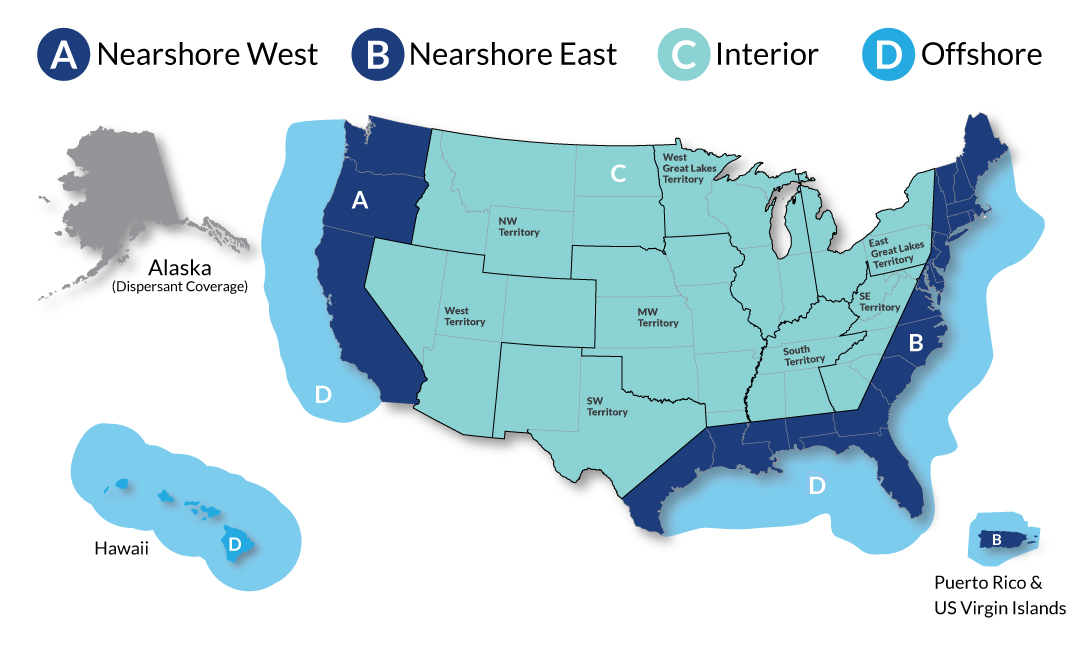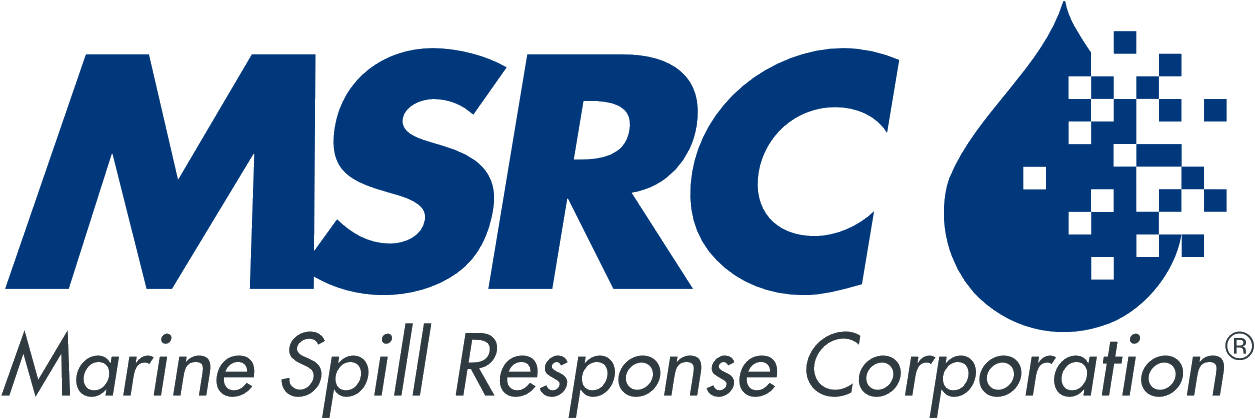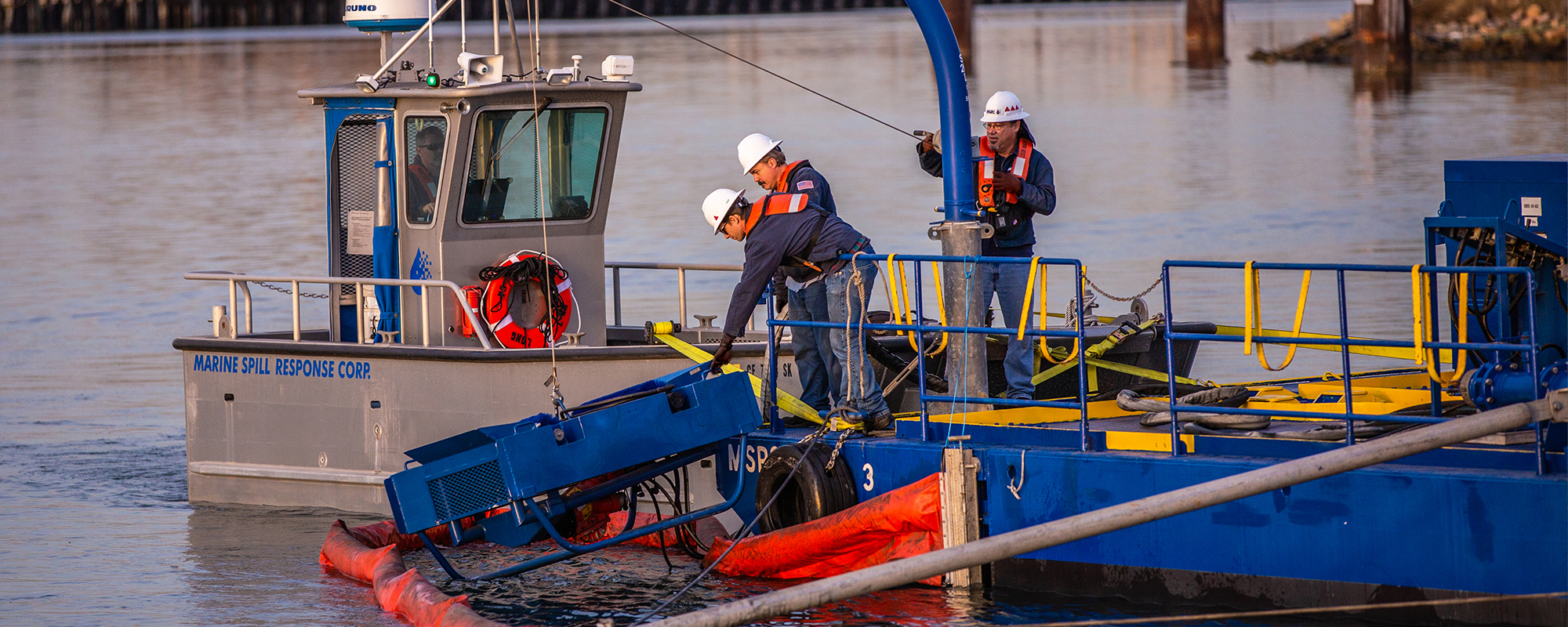MSRC’s spill response capabilities are designed to exceed the needs of our customers’ OSRO OPA 90 requirements and to provide effective, reliable spill response for any spill scenario, large or small, across the oil and gas supply chain. Many variables impact the response equipment, strategy and tactics applied to a spill, such as location, type of oil product spilled, volume of oil product at risk, oil movement, weather and sea state, and water temperature. All of these factors impact how the spilled product collects, spreads, moves, evaporates, and ultimately whether it is recovered, dispersed or burned.
While specific marine environments require specialized tools and capabilities, there are key components that are essential for an effective and successful spill response in any environment:
- Containment Boom to collect oil
- Mechanical Recovery / Skimmer technologies to recover oil
- Oil Spill Response Vessels (OSRVs) to conduct mechanical recovery and storage
- Temporary storage capacity for recovered product
- Dispersant inventory and aerial application assets
- Pyroboom and other tools for In-situ-burn operations in a controlled environment
- Surveillance and remote sensing tools for aerial tracking and identification of recoverable oil on a 24-hour basis
- Communications equipment to re-establish and maintain connectivity to conduct a response
Much of MSRC’s dedicated portfolio was designed for offshore scenarios to handle large Tanker and E&P events in deepwater, hundreds of miles offshore. Our primary assets for offshore scenarios are listed below with their specific offshore application.
Responder Class OSRVs 210 ft
Our 210 ft Responder OSRVs are designed for long-term offshore operations, with an oil and water separator, and 4,000 BBLs of storage capacity, berths for 38 people, and sufficient fuel to last up to a month before resupply. This OSRV can serve as an excellent platform to launch mechanical recovery or in situ burn operations for sustained periods in offshore environments. It can also function as a command and control vessel.
Ocean Boom
While many OSROs and Marine Salvage providers have stockpiles of boom, offshore / open ocean environments specifically require ocean boom of 42” inches or higher and manufactured of resilient materials to withstand rough sea states for extended periods of time. MSRC has the largest supply of ocean boom of any OSRO in the U.S. and we deploy and inspect it regularly to verify it is in excellent condition.
In Situ Burn
MSRC has the largest stockpile of pyro boom in the world for use in controlled offshore environments to burn off corralled oil. This is a highly effective alternative to mechanical recovery under the right conditions involving an applicable type of petroleum product, accommodating water temperature and sea state.
Ocean-going Skimming Barges
The ability to store recovered oil/water product is critical to sustaining on-water skimming efforts continuously without interruptions to offload. MSRC’s twelve OSRBs are set up to perform skimming and storage operations as needed. Staged from Portland, ME to Port Angeles, WA, these barges have (on average) approximately 38,000 barrels of temporary storage capacity, as well as on-board skimming capability.
Vessel of Opportunity High-Volume Skimming Packages
MSRC has twelve high-volume skimming packages, complete with cranes and ancillary deployment equipment to install on any vessel of opportunity, such as platform supply vessels. These high-volume skimming packages are prepackaged into shipping containers to be trucked or freighted to international locations if needed.
Aerial Dispersants
Under appropriate and approved conditions, dispersants can be a highly effective tool in a large-scale release. MSRC has three dedicated Boeing 737 for high volume aerial application of dispersant in tight timelines, and over 121.5K gallons of dispersant.
Aerial Surveillance and Tracking
MSRC has the most advanced platforms of remote sensing and surveillance equipment of any OSRO to spot recoverable oil slicks, view the movement of the oil, and adjust recovery tactics accordingly. Among our five surveillance technologies, the TK-7 and dedicated drone fleet are especially useful for offshore spills because of their high height of eye, large swath of imaging, and infrared technologies that can distinguish thick oil from unrecoverable sheen.
Most marine oil spills take place in harbors or ports or other nearshore environments where vessel traffic is high and vessel activities increase risk of spill incidents. MSRC’s dedicated equipment portfolio includes spill response equipment designed for shallow water and shorter response timelines driven by nearshore locations.
Shallow Water Barge Systems
These agile small footprint ~40 ft barges, known as “SBS’s,” are ideal for on water recovery operations in shallow water and congested incident sites like busy ports or harbors. Their 200 barrels of onboard storage capacity per barge allow them to sustain recovery operations for extended periods of time and they can also receive recovered product from smaller OSRVs conducting skimming operations nearby.
Small OSRVs
MSRC has over 25 Small OSRVs between 47 ft and 115 ft in length outfitted with brush skimmers and belt skimmers that can maneuver easily in shallow water areas like ports and harbors. These OSRVs are typically outfitted with an arm that extends to the side of the vessel to create a containment pocket using onboard boom to corral oil into its onboard skimming system.
Marco Skimming Vessels
Ten Marco skimming vessels are key features of MSRC’s shallow water capability. These lightweight OSRVs travel up to 10 knots and are outfitted with belt skimmers that are particularly well suited for recovering oil products that are typically used as bunkers or fuel. The Marco Skimming Vessels can hold up to 25 barrels of recovered product before quickly traveling to the nearest offloading storage barge.
Fast Response Vessels (FRVs)
FRVs can travel up to 26 knots and are large enough for up to 2,000 ft of boom staged onboard, up to 215 barrels of storage capacity, and lifting capability to deploy various types of skimmers. They are excellent spill response vessels for meeting tight regulatory timelines for near shore facilities and transfer operations.
Harbor Boom & Shoreline Boom
MSRC and its contractor network have an extensive inventory of nearshore and shoreline boom that can be deployed early in a near shore event to protect shorelines and beaches from oil. Ocean boom can also be an important tool in shallow water environments like ship channels, where heavy vessel traffic can create open ocean like conditions by producing big wakes as they travel.
Vessel of Opportunity High Volume Skimming Packages
While these high-volume skimmers are designed for use on a vessel of opportunity offshore, MSRC has successfully used them in ports and harbors to speedily recover oil collecting underneath docks and piers. They can be staged right on the pier and connected to a dedicated storage tank.
Surveillance & Remote Sensing
Spills in shallow water environments would benefit most from our dedicated drone fleet to support around the clock skimming operations with a big picture view of the full incident site. Drones are an important surveillance tool best suited for shoreline recovery operations, given their limited operating parameters at night and over water. In addition, the vessel mounted X-Band and thermal infrared (TIR) cameras on MSRC’s vessels assist with close-in imaging to distinguish thick recoverable oil from sheen.
Inland capabilities require similar equipment to nearshore and shoreline equipment, along with some specialized spill response equipment for swift moving and/or terrestrial response. MSRC has specialized inland spill response equipment like the underflow dam, which is used for swift water containment, and inland boom; however, inland capabilities have more to do with specific deployment techniques of nearshore or shoreline equipment and response strategies for effective booming and recovery in dikes, berms, rivers, dams and marshes and ice. For inland response, MSRC trains contractors that are part of its STARs network in the specific techniques and strategies relevant to the surrounding environment for Tier 1 response and uses our dedicated Coastal response team as a strike force to cascade to the incident site during a sustained spill incident.

MSRC is classified by the USCG for Non-Floating Oils (NFO) response. MSRC would use a combination of dedicated response equipment and tools belonging to its STARs contractor network to address NFOs. NFO response involves anticipating final deposit zones of the spilled product and specific deployment techniques that are more effective for product that sinks.

